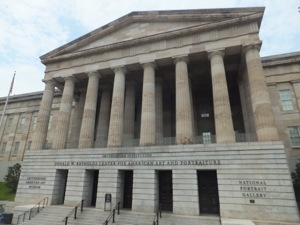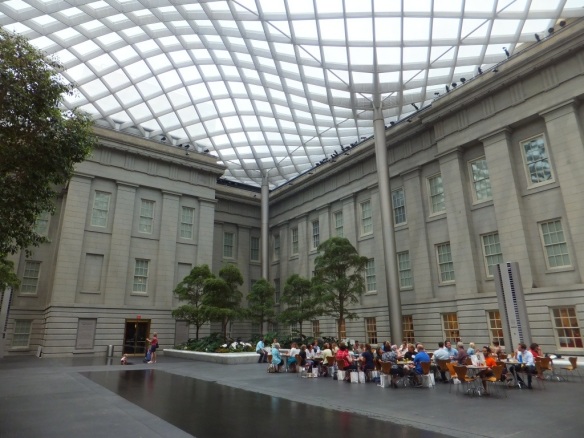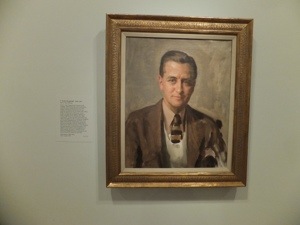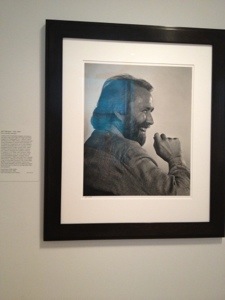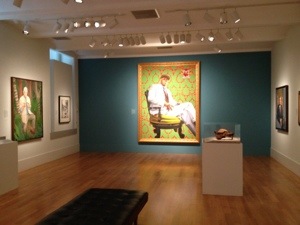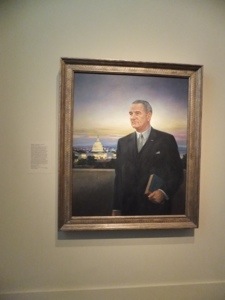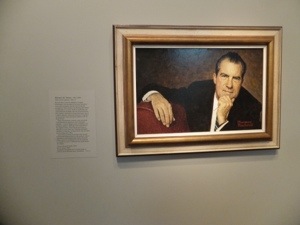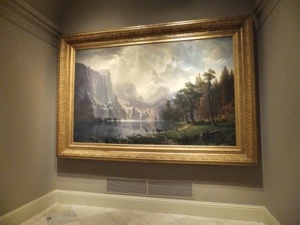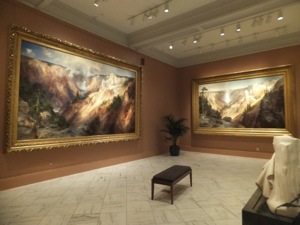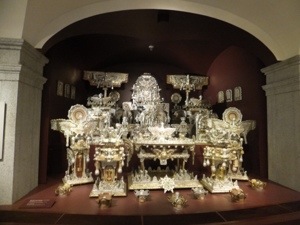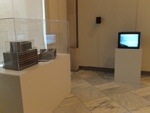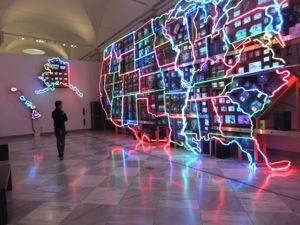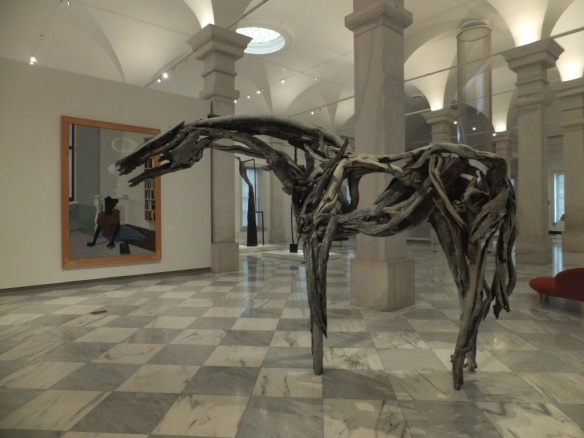Back to Washington!
We last left off on DC Day 2 at the American Art Museum & Portrait Gallery and I teased that some Air & Space was coming next. I left the art gallery in the late afternoon feeling like I could have spent the rest of the day there, but there was too much to see & too little time to be devoting whole days to one museum.
The Gallery is one of the Smithsonian institutions that are not on the National Mall. It`s actually located about 1km north, so only a short walk away. On my way to the next museum on my list I stopped for a late lunch. It is so easy to lose track of time when you’re wrapped up in how much there is to see that it`s suddenly 2pm and you haven’t eaten anything. I was very excited to come across a Pret a Manger. Justine & I had frequented their establishments in London and beyond during our Europe trip (like this day) and I found their food the perfect quick meal. I munched on a wrap & chai tea and contemplated where my next stop should be.

It seemed logical to go straight to the place I most wanted to see. That way I would be sure not to miss it. My path from Pret to the National Air & Space Museum took me through the National Gallery of Art’s Sculpture Garden. The National Gallery is not a Smithsonian owned museum, however it does sit on the Mall and is also free to visit. 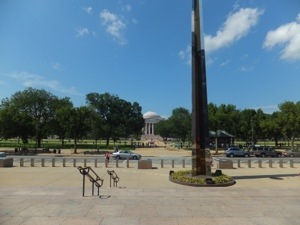
It was a really lovely day out, bright sunny and hot. Maybe a little too hot. Actually, definitely a little too hot. I was happy to take a walk outside though, as I knew I was heading to another wonderfully air-conditioned building at the other end. The National Gallery’s Sculpture Garden offered a wide variety of styles. Here are my favorites: the giant spider thing, a replica of an old Paris Metro entrance (this made me so nostalgic that it almost physically hurt…if you wanna read about my time in Paris you can click here…or here…or here…or here…), The crazy metal tree you can see behind the metro stop and this house.
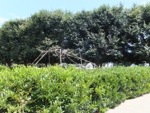
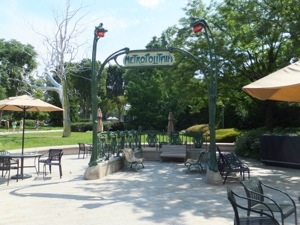
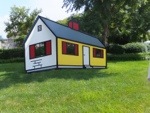
The last is literally called House I and was created by American artist Roy Lichtenstein. What was really eye catching about it (and that doesn’t translate into a photo) is that the house is actually a “V” shape and appears to dramatically change proportions as you walk by it. Very cool, very clever!
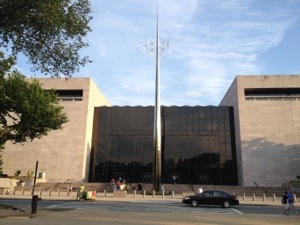
The Air & Space Museum started out as simply the National Air Museum in 1946. After the space race of the 50’s & 60’s the Space part of it was added. Walking into the building it’s like “BAM! Check out all of this stuff!” I was barely even in the door and already my camera was out and I was snapping photos of planes, rockets & the Gemini IV space capsule. I was so overwhelmed that I missed the moon rock the first time by. My piece of advice for entering this museum: Don’t miss the moon rock! I lucky figured it out and doubled back later because no one wants to miss the opportunity to touch an actual piece of the moon!
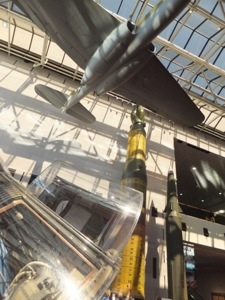
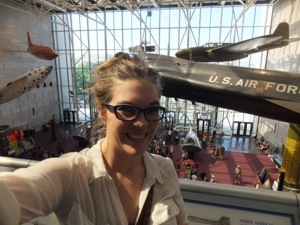
Feeling a little over stimulated I decided to grab a map and plan a route. Little did I know that the museum had the world’s most helpful staff! The elderly gentleman behind the counter inquired into my area of interest (all of it!) and time commitment (as long as it took!) then pulled out his red pen & a map and plotted a course that best suited my needs.
My museum expert had me starting on the second floor at the beginning: the Wright Brothers. In the center of this room stood the actual 1903 Wright Flyer, aka the first plane to every accomplish powered flight! After casually flying from Edmonton to DC it’s incredible to see where it all started, and only just over 100 years ago!
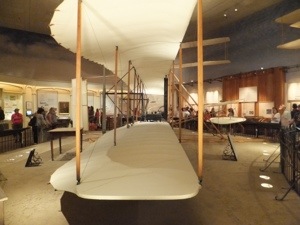
Continuing clockwise around the upper floor I watched airplanes progress from a new discovery to a war-time necessity. Air travel first gained popularity as a sport in the 1930’s. Legends were made as pilots pushed each other to travel further and faster. Amelia Earhart flew her Lockhead 5B Vega clear across the Atlantic and then North America, being the first woman to do each. Many others had a more tragic fate. One display featured the slightly morbid game of Success, Rescued or Dead, where you read of pilots and their attempted flights and had to guess the results. Airplane development & production really took off though at the outbreak of the Second World War. The minor involvement of air travel during WWI had proved immensely useful and all nations were determined to seize this advantage. The German found the most success and by the end of WWII the Allies were so eager to capture examples of these advanced aircrafts that they instituted Operation LUSTY (LUftwaffe Secret TechnologY). The flyable planes were flown to Europe and then transported overseas to the US to be studied.

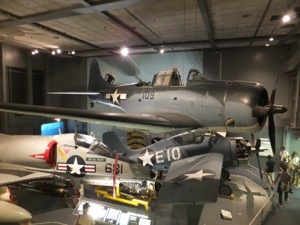
Continuing downstairs the museum delved into the progression of commercial air travel. The early advertisements made the journey look awfully glamorous, but the reality was somewhat less so. A one-way ticket across the country cost $338 in 1929. At that time a Ford Model A cost merely $525…can you imagine if you could buy a car with the price of round-trip airfare!?! If you could afford to board the plane the ride was not the luxurious ride we experience today. I know what you’re thinking: Luxurious? Do you call being jammed into a middle seat between a smelly man and an obese woman while listening to screaming babies and having to pay for a lackluster meal luxurious? Well in comparison it is! The noise of a early commercial jet in take off was 120dB in the cabin…that’s 10dB louder than front row ay a rock concert…it’s also only 10dB lower than the threshold of pain. But I am sad I am too young to have ever seen flight attendants dressed in these get-ups:
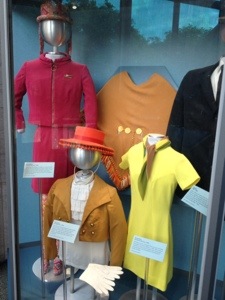
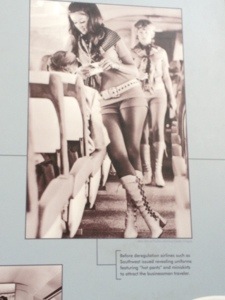
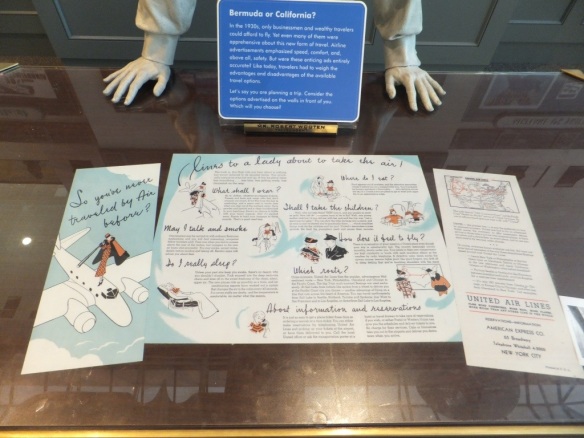
One of the most interesting things I saw all day was a video mapping the flights of all planes flying over the USA in one day. At peak times there can be upwards of 5000 planes in the air. And then it showed the air traffic on 9/11. 5000 planes in the air, then within minutes every one of them grounded. It’s amazing they could have that kind of control…although I also find it amazing that with that many planes in the air at once they aren’t constantly crashing into each other.
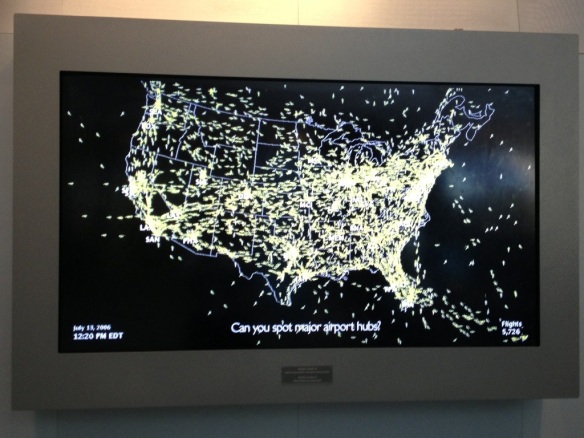
Moving on I entered the Space half of the museum. I find planes plenty interesting, but they are nothing compared to spaceships!
The Space Race Gallery features a Skylab Orbital Workshop. Here you can see an example of an orbiting astronaut’s quarters. They are the opposite of roomy. In this Gallery you will also find the Missile Pit. Um, can you say coolest name ever?
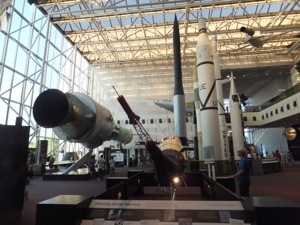
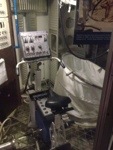
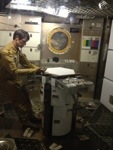
Travelling through the space exhibits there was many interesting and educational things to see. I learned about the early sky mapping, examined space ship design models, followed the space race timeline and saw an actual Apollo Lunar Module. This last one was set up to recreate a moon landing and I could almost feel the weightlessness of the astronauts as they took their first step into the great unknown.
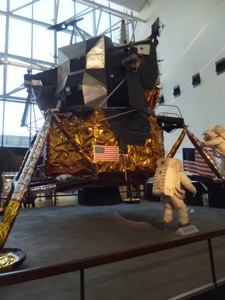
My favourite area was Apollo to the Moon where each of the American space flights were documented and displayed. The gallery of actual equipment blew my mind. “Oh that’s just a actual space suit worn by an actual Apollo astronaut as he walked on the actual moon. No big deal.” Huge deal! The Lunar Rover was really fascinating. I’m amazed that scientists were able to create a vehicle that would operate on the low gravity, air-less surface of moon… Although the guys next to me seemed to be less impressed. The one guy took one look and said: I don’t know…It just looks like a couple of lawn chairs strapped to the frame of an old Chevy track.”
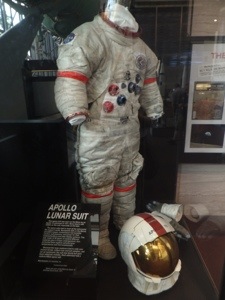
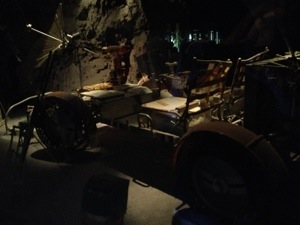
Oh, and I also saw Scott Hamilton skate the universe…???…
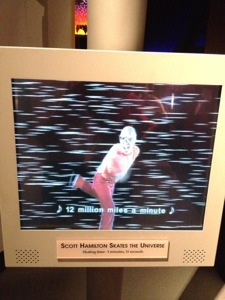
And with that I wrap up this post…more on some of the other Smithsonian’s to come…but until then:
To Infinity & Beyond!
Love, Luck & Lightyears,
Kris

